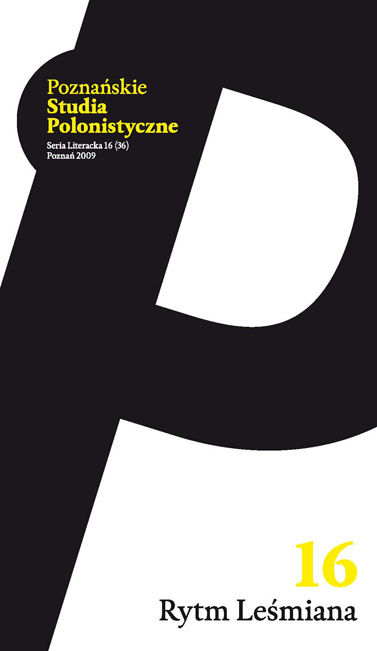Fenomen kobiecości w wyobraźni poetyckiej Bolesława Leśmiana na tle europejskiej refleksji antropologicznej
The phenomenon of femininity in the poetical imagination of Bolesław Leśmian against the background of European anthropological reflection
Author(s): Marzena KarwowskaSubject(s): Language and Literature Studies, Studies of Literature, Polish Literature, Philology
Published by: Wydawnictwo Poznańskie Studia Polonistyczne
Keywords: archetypal figures, mythical figures; misogynism; symbolism; remithologization
Summary/Abstract: In the early decades of the twentieth century the misogynist philosophical conceptions proposed by Schopenhauer, Nietzsche and Weininger exerted a particular influence upon the image of woman. In the literary output of Leśmian this phenomenon takes on the form decidedly divergent from the patterns prevalent at the time manifesting in the typical features of archetypal and mythical figures. In the construction of his literary lovers, Leśmian makes references to ritual symbolism. His almost hieratic female figures, notionally available to woman, guide the way in a possible passage between the beyond (spiritual world) and the world of mortals. The poet accentuates the analogies between the sacredness of woman and the sacrum of Tellus Mater and adopts the at- titude of a neophyte who endows women with the power of initiation into the mystery of regeneration. The notional female figures created by Leśmian, with the typical for the poet positive and exhilarating valorization of woman’s body, have the power of euphemising thanatical fears and anxiety. Leśmian treats the corporeal nature of woman as hierophany: a female, revealing the sacral character of the universe, forms and contributes to its spiritual order. Schopenhauer, Nietzsche and Weininger demythologize the phenomenon of femininity, Leśmian remythologizes it back again.
Journal: Poznańskie Studia Polonistyczne. Seria Literacka
- Issue Year: 2009
- Issue No: 16
- Page Range: 51-62
- Page Count: 11
- Language: Polish

